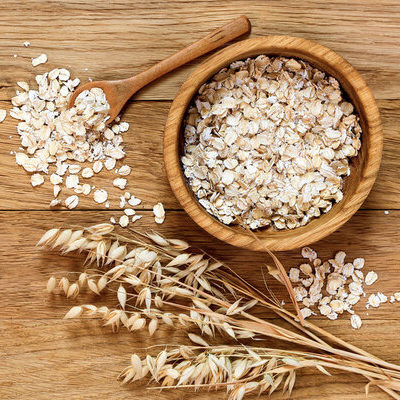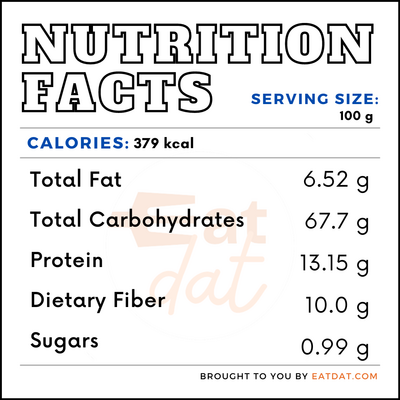
Oats
What are Oats?
Oats (Avena sativa) are a cereal grain from the Poaceae grass family. The grain refers to the edible seed of this grass. Oats go through different processes to make the Scottish, rolled, quick, and steel-cut varieties.
The top ten most popular oat brands are:
- Nature’s Path
- Quaker
- Straw Propeller
- Think Thin
- Love Grown
- Bakery on Main
- Purely Elizabeth
- McCann’s
- Better Oats
- Kodiak Cakes
Origin of oats
This cereal can be traced back thousands of years, with the oldest grains found in Egypt around 2000 BC. However, this food wasn’t valued by the Egyptians and wasn’t genuinely cultivated like wheat or barley. The Chinese might have been familiar with this grain before the ancient Egyptians, but they also didn’t take to the grain. Later on, the Romans brought this grain to Britain where the climate was suitable for its cultivation. The Scottish became the first to appreciate oats and porridge soon became their national dish.
Nutrition
A 100g serving of this grain contains:

This cereal grain is packed with health benefits. Oats are rich in thiamine, magnesium, phosphorus, zinc, manganese, selenium, and iron. This grain also contains both soluble and insoluble fiber, which help lower cholesterol, stabilize blood sugar levels, promote gut health, and curb cravings.
Additionally, a variety of antioxidants (avenanthramides) are found exclusively in this food. Avenanthramides are shown to exhibit anti-inflammatory and anti-itching activity, as well as provide additional protection against coronary heart conditions, carcinoma, and skin irritation. This cereal grain is naturally gluten-free; however, some manufacturers may potentially contaminate grains with equipment.
Commercial production
The first step in the commercial production of this food is harvesting the grain from the plant. Then, the kernels have their hulls removed, leaving behind only the groats. After that, the groats are further processed to create the rolled, quick, and steel-cut varieties of this grain.
The rolled variety of this cereal grain must go through the processes of steaming and flattening. Quick oats are similar to the rolled variety, although they have undergone more processing to reduce their cooking time. The production of the steel-cut type involves chopping the groats with large steel blades. Finally, once the grains are processed, they are packaged and stored for sale.
Oat recipes
This cereal is versatile and nutritious. Some popular recipes include:
- Porridge
- Mixed Berries Overnight Oats
- Oatmeal Raisin Cookies
- Chocolate Oat Milk
- Grandma’s Oatmeal Cake
FDA regulation
The Food and Drug Administration stipulates that oats are a cereal grain and must be appropriately labeled as such. The FDA permits the use of the health claim on food labels associating a reduced risk of coronary cardiomyopathy with the consumption of beta-glucan soluble fiber from whole grain oats. Furthermore, the organization prevents this cereal grain from being labeled as “gluten-free” due to the possibility of cross contamination in its production.
References
“Oats.” The Nutrition Source, Harvard T.H. Chan, 4 Nov. 2019, www.hsph.harvard.edu/nutritionsource/food-features/oats/.
Harte, Tom. “A Harte Appetite: The Origins of Oatmeal.” KRCU, www.krcu.org/post/harte-appetite-origins-oatmeal#stream/0.
Center for Food Safety and Applied Nutrition. “Draft Guidance on What FDA Considers to Be ‘Whole Grain.’” U.S. Food and Drug Administration, FDA, http://www.fda.gov/regulatory-information/search-fda-guidance-documents/draft-guidance-industry-and-fda-staff-whole-grain-label-statements.
